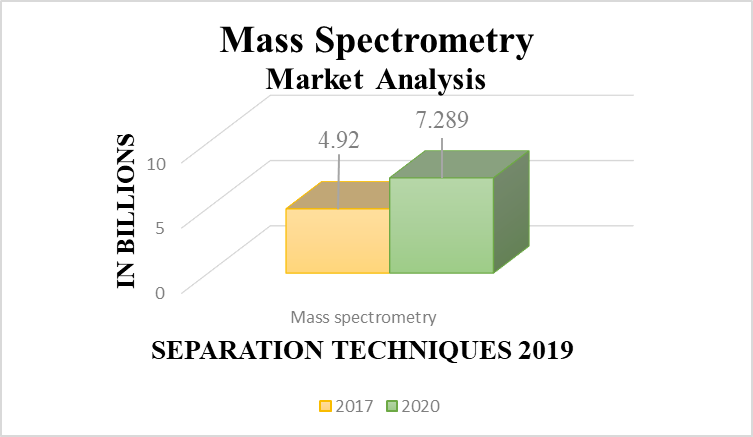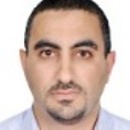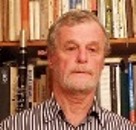Theme: Frontiers in Pharmaceutical Products and Pharmacological Trials in the Time of Covid-19
Separation-Techniques-Chemistry-2020
Conference Series invites all the participants from all over the world to attend 10th World Conference on Separation Techniques & Formulation Reports scheduled during October 07-08, 2020 at Online Webinar. This includes prompt Keynote presentations, Oral talks, Poster presentations and Exhibition.
Separation Techniques is a global annual event to discuss and learn about Novel separation techniques in chemistry, Hyphenated Separation Techniques, Emerging separation technologies, Advances in Sample Preparation Techniques, High Performance Liquid Chromatography, and Advancements in chromatography techniques, Spectroscopy, Basic separation techniques and research related to these fields.In the light of this theme, the conference series aims to provide a forum for international researchers from various areas of analytical research, separation sciences, method development and validation by providing a platform for critical analysis of new data, and to share latest cutting-edge research findings and results about all aspects of Separation Techniques.
The separation techniques industry is showing growth rapidly, with value expected to hit 228 billion dollars by 2016, up from 164 billion dollars in the year 2010, marking annual growth of nearly 7%, according to a recent industrial research report. Geographically, global separation technologies market has been segmented into four areas namely, North America, Europe, Asia-Pacific and Rest of the World. Separation technique will bring together developers, users, academicians and researchers for sharing and exploring new areas of research and development and to discuss emerging issues. There will be many seminars, workshops and technical sessions take place in this conference series which will catch the attention of the professionals to attend the conference and it would enormously enrich our knowledge in understanding the current requirements of the global pharmaceutical industry. The expert will get an excellent opportunity to give many presentations and lectures on different topic and will also present their case studies.
Track 01: Novel Separation Techniques in Chemistry
The process of separation is integral unit operation in most of the Modern Pharmaceutical Techniques, chemical and other process plants. Among the separation processes, some are standard and conventional processes, like, distillation Process, adsorption process, etc. These processes are quite common and the relevant technologies are well developed and well-studied. On the other hand, newer separation processes like, membrane based techniques, super critical fluid extraction, chromatographic separation, etc., are gaining importance in modern days plants as novel separation processes.
Related Societies:
Europe: The Chromatographic Society | British Mass Spectrometry Society | Czech Chemical Society | Royal Netherlands Chemical Society | Hong Kong Society of Mass Spectrometry | German Society for Mass Spectrometry | African Network of Analytical Chemists | Belgian Society for Mass Spectrometry | Chemical Society of France.
USA: American Filtration and Separations Society | Chinese American Chromatography Association | Federation of Analytical Chemistry and Spectroscopy Societies | Association of Analytical Communities | American Chemical Society | Association of Official Analytical Chemists | Society for Electro analytical Chemistry | Canadian Society for Chemistry | Canadian Society for Mass Spectrometry | Society for Analytical Chemists of Pittsburgh.
Asia-Pacific: Indian Membrane Society | Korean American Chromatography Association | Federation of Asian Chemical Societies | Indian Society for Mass Spectrometry | Indian Society for Electro analytical Chemistry | The Japan Society for Analytical Chemistry | Israel Society for Analytical Chemistry.
Track 2: Emerging Separation Technologies
There is a broad growing worldwide interest in step change Separation Technologies, in key areas of physical sorption, distillation process, membranes, heat exchange and absorption. Many of the innovative research activities are initiated by growing concern with environment (e.g. Co2 capture), equipment and energy cost, A number of new technologies find applications in neigh boring processes. This new technologies include Industrial membrane filtration technology, Magnetic Separation Techniques in various fields, Cell Separation Techniques in microbiology, Distillation and filtration as Separation techniques.
Related Societies:
Europe: European Society for Separation Science | Russian Membrane Society | Separation Science Group - Royal Society of Chemistry | South African Chromatography Society | The Filtration Society | The French Membrane Society | The International Association for the Advancement of High Performance Thin Layer Chromatography (HPTLC Association) Czech Chemical Society | German Membrane Society | African Network of Analytical Chemists.
USA: American Society for Mass Spectrometry | Association of Analytical Communities (AOAC) International | Canadian Society for Analytical Sciences | American Institute of Chemical Engineers | American Membrane Technology Associations | North American Membrane Society | American Organization of Analytical Chemists International (AOAC)
Asia-Pacific: Membrane Society of Japan | Australian Membrane Society | Chromatography Society of India | Australian and New Zealand Society for Mass Spectrometry | Federation of Asian Chemical Societies | Royal Australian Chemical Institute | The Israeli Society for Mass Spectrometry.
Track 3: Desalination and water purification
These technologies use heat evaporative systems, involve brine heaters, flash chambers and high temperature conversion processes in the conversion of seawater to fresh water. This technology has demanded the use of a wide range of materials involving the copper-base (cupronickels), iron-base (stainless steels) and titanium. Both the multi-stage flash (MSF) and the multi-effect distillation (med) processes are very capital intensive, with large footprints. The membrane process, or reverse osmosis (RO), is the low-temperature, high-pressure process in achieving the same ends. At the same time, this is a separation process used in the optimization and purification of potable and drinking waters. This process can be modularized or built as a full-scale plant for conversion.
Related Societies:
Europe: European Society for Separation Science | Russian Membrane Society; Separation Science Group - Royal Society of Chemistry | South African Chromatography Society | The Filtration Society | The French Membrane Society | The International Association for the Advancement of High Performance Thin Layer Chromatography (HPTLC Association) | Czech Chemical Society | German Membrane Society | African Network of Analytical Chemists.
USA: American Society for Mass Spectrometry | Association of Analytical Communities (AOAC) International | Canadian Society for Analytical Sciences | American Institute of Chemical Engineers | American Membrane Technology Associations | North American Membrane Society | American Organization of Analytical Chemists International (AOAC).
Asia-Pacific: Membrane Society of Japan | Australian Membrane Society | Chromatography Society of India | Australian and New Zealand Society for Mass Spectrometry | Federation of Asian Chemical Societies | Royal Australian Chemical Institute | The Israeli Society for Mass Spectrometry.
Track 4: Separation Processes in Chemical Engineering
In the field of Chemical Engineering separation process is the mass transfer that converts the substance mixture into specific product mixtures. In some cases, a separation may fully divide the mixture into its pure constituents. Separation Techniques are conducted based on the differences between chemical properties, or physical properties like size, shape, mass, density and chemical affinity, between the constituents of a mixture, and are often differentiated according to the specific differences they use to achieve .The Global process Instrumentation market is expected to reach $18.96 Billion by 2020, at a CAGR of 3.34% from 2014 to 2020. Region leads the overall Process Instrumentation market. The Separation Process in the chemical engineering includes Adsorption, Capillary electrophoresis, Centrifugation and cyclonic separation, Crystallization, Decantation, Distillation, Drying, Electrostatic Separation, Elutriation, Evaporation, Extraction, Field flow Fractionation, Magnetic separation, Precipitation, Recrystallization.
Related Societies:
Europe: European Society for Separation Science | Russian Membrane Society | Separation Science Group - Royal Society of Chemistry | South African Chromatography Society | The Filtration Society | The French Membrane Society | The International Association for the Advancement of High Performance Thin Layer Chromatography (HPTLC Association) | Czech Chemical Society | German Membrane Society | African Network of Analytical Chemists.
USA: American Society for Mass Spectrometry | Association of Analytical Communities (AOAC) International | Canadian Society for Analytical Sciences | American Institute of Chemical Engineers | American Membrane Technology Associations | North American Membrane Society | American Organization of Analytical Chemists International (AOAC)
Asia-Pacific: Membrane Society of Japan | Australian Membrane Society | Chromatography Society of India | Australian and New Zealand Society for Mass Spectrometry | Federation of Asian Chemical Societies | Royal Australian Chemical Institute | The Israeli Society for Mass Spectrometry.
Track 5: Advances in Chromatography and Mass Spectrometry
Chromatography and mass qualitative analysis is employed for analysis of organic compounds. Electro spray ionization (ESI) could be a technique employed in mass spectroscopic analysis. As compare to chromatography and mass spectrometry, HPLC is more flexible informative and trusted by the industry people. Recent advances in sample preparation techniques to beat difficulties encountered throughout measuring of little molecules from bio fluids mistreatment LC-MS. For Measuring, observation and protective your important Investments analytical chemistry instruments are used. Global Bio analysis seminars are conducted and those specifically applied for chromatography assays, ligand binding assays to know more advances.
Related Societies:
Europe: European Society for Separation Science | Russian Membrane Society | Separation Science Group - Royal Society of Chemistry | South African Chromatography Society | The Filtration Society | The French Membrane Society | The International Association for the Advancement of High Performance Thin Layer Chromatography (HPTLC Association) | Czech Chemical Society | German Membrane Society | African Network of Analytical Chemists.
USA: American Society for Mass Spectrometry | Association of Analytical Communities (AOAC) International | Canadian Society for Analytical Sciences | American Institute of Chemical Engineers | American Membrane Technology Associations | North American Membrane Society | American Organization of Analytical Chemists International (AOAC)
Asia-Pacific: Membrane Society of Japan | Australian Membrane Society | Chromatography Society of India | Australian and New Zealand Society for Mass Spectrometry | Federation of Asian Chemical Societies | Royal Australian Chemical Institute | The Israeli Society for Mass Spectrometry.
Track 6: Crystallography
Crystallography is the science that analyses crystals, which can be discovered wherever in nature from salt to snowflakes to gemstones. Crystallographers utilize the properties and internal structures of precious stones to decide the course of action of iotas and produce learning that is utilized by scientists, physicists, scholars, and others. Connected Crystallography is a crystallographic technique that is utilized to examine the crystalline and non-crystalline issue with neutrons, X-beams and electrons, their application in consolidated matter research, materials science and the life sciences, and their utilization in identifying stage changes and auxiliary changes of imperfections, structure-property connections, interfaces, and surfaces and so on.
Related Societies:
Europe: European Society for Separation Science; Russian Membrane Society | Separation Science Group - Royal Society of Chemistry | South African Chromatography Society | The Filtration Society | The French Membrane Society | The International Association for the Advancement of High Performance Thin Layer Chromatography (HPTLC Association) | Czech Chemical Society | German Membrane Society | African Network of Analytical Chemists.
USA: American Society for Mass Spectrometry | Association of Analytical Communities (AOAC) International | Canadian Society for Analytical Sciences | American Institute of Chemical Engineers | American Membrane Technology Associations | North American Membrane Society |American Organization of Analytical Chemists International (AOAC).
Asia-Pacific: Membrane Society of Japan | Australian Membrane Society | Chromatography Society of India | Australian and New Zealand Society for Mass Spectrometry | Federation of Asian Chemical Societies | Royal Australian Chemical Institute | The Israeli Society for Mass Spectrometry.
Track 7: Separation techniques in food chemistry
Separation Techniques is the most important unit operation in food processing. The first processes developed to separate food components selected physical or mechanical means that allowed simple separations involving solid–solid or solid–liquid systems. Another group of separation relied on heat-induced phase changes as the driving force for the separation. From simple evaporation to distillation and solvent extraction, such approaches allowed for the concentration of many liquid foods (i.e. milk, fruit and vegetable juices, etc.) and for as the industrial production of ethanol, liquor, and vegetable oils.
Related Societies:
Europe: European Society for Separation Science; Russian Membrane Society | Separation Science Group - Royal Society of Chemistry | South African Chromatography Society | The Filtration Society | The French Membrane Society | The International Association for the Advancement of High Performance Thin Layer Chromatography (HPTLC Association) | Czech Chemical Society | German Membrane Society | African Network of Analytical Chemists.
USA: American Society for Mass Spectrometry | Association of Analytical Communities (AOAC) International | Canadian Society for Analytical Sciences | American Institute of Chemical Engineers | American Membrane Technology Associations | North American Membrane Society |American Organization of Analytical Chemists International (AOAC).
Asia-Pacific: Membrane Society of Japan | Australian Membrane Society | Chromatography Society of India | Australian and New Zealand Society for Mass Spectrometry | Federation of Asian Chemical Societies | Royal Australian Chemical Institute | The Israeli Society for Mass Spectrometry.
Track 8: Clinical chemistry, Biomarkers and Diagnostics assays
Clinical Chemistry is that field of clinical pathology involved with analysis of body fluids. The discipline originated within the late nineteenth century with the use of simple chemical tests for diverse elements of blood and waste product. After this, totally different clinical biochemistry techniques were applied at the side of the use and live of catalyst activities, spectrophotometry, action, and biological assay. Endocrine pathology is that the subspecialty of surgical pathology that deals with the diagnosing and characterization of growth and non-neoplastic diseases of organs of the system, as well as the thyroid, parathyroid gland, secreted exocrine gland, and adrenal glands. Pharmacology is additionally a branch of biological chemistry, and medicines committed the study of the adverse effects of chemicals on living organisms. A diagnosing may be an academic degree array of tests performed on excreta, and one in all the foremost common ways of disease susceptibility. A faecal occult check involves the gathering and analysis of BM to diagnose the presence or absence of a medical condition.
Related Societies:
Europe: European Society for Separation Science; Russian Membrane Society | Separation Science Group - Royal Society of Chemistry | South African Chromatography Society | The Filtration Society | The French Membrane Society | The International Association for the Advancement of High Performance Thin Layer Chromatography (HPTLC Association) | Czech Chemical Society | German Membrane Society | African Network of Analytical Chemists.
USA: American Society for Mass Spectrometry | Association of Analytical Communities (AOAC) International | Canadian Society for Analytical Sciences | American Institute of Chemical Engineers | American Membrane Technology Associations | North American Membrane Society |American Organization of Analytical Chemists International (AOAC).
Asia-Pacific: Membrane Society of Japan | Australian Membrane Society | Chromatography Society of India | Australian and New Zealand Society for Mass Spectrometry | Federation of Asian Chemical Societies | Royal Australian Chemical Institute | The Israeli Society for Mass Spectrometry.
Track 9: Recent Advances in Chromatography-HPLC
The HPLC methodology applied to the analysis of biological samples makes it possible for the identification of many metabolites. Samples from two human embryos culture medium were analysed by high-pressure liquid chromatography–mass spectrometry (HPLC–MS). They work on the principle that many microorganisms have their own unique mass spectral signature based on the particular proteins and peptides that are present in the cells. Identification of unknown peaks in gas chromatography (GC-MS)-based discovery metabolomics is challenging, and remains necessary to permit discovery of novel or unexpected metabolites that may allergic diseases processes and/or further our understanding of how genotypes relate to phenotypes. Here, we introduce two new technologies and advances in pharmaceutical analytical methods that can facilitate the identification of unknown peaks.
Related Societies:
Europe: European Society for Separation Science; Russian Membrane Society | Separation Science Group - Royal Society of Chemistry | South African Chromatography Society | The Filtration Society | The French Membrane Society | The International Association for the Advancement of High Performance Thin Layer Chromatography (HPTLC Association) | Czech Chemical Society | German Membrane Society | African Network of Analytical Chemists.
USA: American Society for Mass Spectrometry | Association of Analytical Communities (AOAC) International | Canadian Society for Analytical Sciences | American Institute of Chemical Engineers | American Membrane Technology Associations | North American Membrane Society |American Organization of Analytical Chemists International (AOAC).
Asia-Pacific: Membrane Society of Japan | Australian Membrane Society | Chromatography Society of India | Australian and New Zealand Society for Mass Spectrometry | Federation of Asian Chemical Societies | Royal Australian Chemical Institute | The Israeli Society for Mass Spectrometry.
Track 10: Membrane technology in separation techniques
Membrane technologies are progressively fetching useful components of pharmaceutical production processes. For some time, membrane separation technologies of reverse osmosis, ultra-filtration and micro-filtration have been used to concentrate and purify both small and large molecules. More recent applications of technologies cover a broad range of separation, concentration and purification needs. For example, pharmaceutical waste streams can be treated by Nano-filtration or evaporation to detoxify them and/or reduce the volume of waste requiring incineration.
Related Societies:
Europe: European Society for Separation Science; Russian Membrane Society | Separation Science Group - Royal Society of Chemistry | South African Chromatography Society | The Filtration Society | The French Membrane Society | The International Association for the Advancement of High Performance Thin Layer Chromatography (HPTLC Association) | Czech Chemical Society | German Membrane Society | African Network of Analytical Chemists.
USA: American Society for Mass Spectrometry | Association of Analytical Communities (AOAC) International | Canadian Society for Analytical Sciences | American Institute of Chemical Engineers | American Membrane Technology Associations | North American Membrane Society |American Organization of Analytical Chemists International (AOAC).
Asia-Pacific: Membrane Society of Japan | Australian Membrane Society | Chromatography Society of India | Australian and New Zealand Society for Mass Spectrometry | Federation of Asian Chemical Societies | Royal Australian Chemical Institute | The Israeli Society for Mass Spectrometry.
Track 11: Advance Bio-analytical Techniques
Analytical & Bio analytical Techniques deals with the analytical methods used for characterization, release, and stability testing of the chemical compounds as well as the biotechnological/biological products. Since the last two decades, the concept of bio analysis has evolved into biopharmaceuticals which also takes into consideration larger peptides and proteins. As Bio analytical techniques revolutionise measurement of minute quantities of metabolites and their impact, the subsequent findings are of significance for applying Analytical and Bio analytical techniques in clinical and medical procedures.
Related Societies:
Europe: The Chromatographic Society | British Mass Spectrometry Society | Czech Chemical Society | Royal Netherlands Chemical Society | Hong Kong Society of Mass Spectrometry | German Society for Mass Spectrometry | African Network of Analytical Chemists | Belgian Society for Mass Spectrometry | Chemical Society of France.
USA: American Filtration and Separations Society | Chinese American Chromatography Association | Federation of Analytical Chemistry and Spectroscopy Societies | Association of Analytical Communities | American Chemical Society | Association of Official Analytical Chemists | Society for Electro analytical Chemistry | Canadian Society for Chemistry | Canadian Society for Mass Spectrometry | Society for Analytical Chemists of Pittsburgh.
Asia-Pacific: Indian Membrane Society | Korean American Chromatography Association | Federation of Asian Chemical Societies | Indian Society for Mass Spectrometry | Indian Society for Electro analytical Chemistry | The Japan Society for Analytical Chemistry | Israel Society for Analytical Chemistry.
Track 12: Separation Techniques used in Geology / Mineralogy
Mineral ores are one of the basic raw materials which should be separated and purified to their mineral forms. Mineral ore can be separated according to their particle sizes, physical properties and chemical properties. Separations are made by chemical treatments and they are subject to quality control in each sector to reach its economic grade by separating all other impurities.
Related Societies:
Europe: The Chromatographic Society | British Mass Spectrometry Society | Czech Chemical Society | Royal Netherlands Chemical Society | Hong Kong Society of Mass Spectrometry | German Society for Mass Spectrometry | African Network of Analytical Chemists | Belgian Society for Mass Spectrometry | Chemical Society of France.
USA: American Filtration and Separations Society | Chinese American Chromatography Association | Federation of Analytical Chemistry and Spectroscopy Societies | Association of Analytical Communities | American Chemical Society | Association of Official Analytical Chemists | Society for Electro analytical Chemistry | Canadian Society for Chemistry | Canadian Society for Mass Spectrometry | Society for Analytical Chemists of Pittsburgh.
Asia-Pacific: Indian Membrane Society | Korean American Chromatography Association | Federation of Asian Chemical Societies | Indian Society for Mass Spectrometry | Indian Society for Electro analytical Chemistry | The Japan Society for Analytical Chemistry | Israel Society for Analytical Chemistry.
Track 13: Separation Techniques Used In Nanotechnology
Nanotechnology is the emerging field that deals with Nano particles this track confers the information about the separation techniques used in nanotechnology. It is a branch of science that exploring the new dimension in the Nano level which leads into the discovery of new drugs, treatments, user friendly equipment, technologies, etc. This generation is now focusing on the Nano & Pico level experiments & technologies which lead to newer version of science.
Related Societies:
Europe: The Chromatographic Society | British Mass Spectrometry Society | Czech Chemical Society | Royal Netherlands Chemical Society | Hong Kong Society of Mass Spectrometry | German Society for Mass Spectrometry | African Network of Analytical Chemists | Belgian Society for Mass Spectrometry | Chemical Society of France.
USA: American Filtration and Separations Society | Chinese American Chromatography Association | Federation of Analytical Chemistry and Spectroscopy Societies | Association of Analytical Communities | American Chemical Society | Association of Official Analytical Chemists | Society for Electro analytical Chemistry | Canadian Society for Chemistry | Canadian Society for Mass Spectrometry | Society for Analytical Chemists of Pittsburgh.
Asia-Pacific: Indian Membrane Society | Korean American Chromatography Association | Federation of Asian Chemical Societies | Indian Society for Mass Spectrometry | Indian Society for Electro analytical Chemistry | The Japan Society for Analytical Chemistry | Israel Society for Analytical Chemistry.
Track 14: Bio separation techniques
Bio separation is the name given to the practice of purifying biological products on large-scale, using fundamental aspects of engineering and scientific principles. The end goal of bio separation is to refine molecules, cells and parts of cells into purified fractions. Biological products can be separated and purified depending upon the following characteristics: density, diffusivity, electrostatic charge, polarity, shape, size, solubility and volatility.
Related Societies:
Europe: The Chromatographic Society | British Mass Spectrometry Society | Czech Chemical Society | Royal Netherlands Chemical Society | Hong Kong Society of Mass Spectrometry | German Society for Mass Spectrometry | African Network of Analytical Chemists | Belgian Society for Mass Spectrometry | Chemical Society of France.
USA: American Filtration and Separations Society | Chinese American Chromatography Association | Federation of Analytical Chemistry and Spectroscopy Societies | Association of Analytical Communities | American Chemical Society | Association of Official Analytical Chemists | Society for Electro analytical Chemistry | Canadian Society for Chemistry | Canadian Society for Mass Spectrometry | Society for Analytical Chemists of Pittsburgh.
Asia-Pacific: Indian Membrane Society | Korean American Chromatography Association | Federation of Asian Chemical Societies | Indian Society for Mass Spectrometry | Indian Society for Electro analytical Chemistry | The Japan Society for Analytical Chemistry | Israel Society for Analytical Chemistry.
Track 15: Fractionation & Magnetism as a Separation Technique
Fractionation is a separation technique in terms of phase transition. It most probably used in all research and industrial sectors. Magnetic separation is used to separate materials which are susceptible to the magnetic field. Magnetic Separation is the way toward utilizing attractive drive to expel metallic or ferrous materials from a mixture. This track deals with separations based on the magnetic field coupled with electric current, electrostatic separation, and polarizing separation.
Related Societies:
Europe: The Chromatographic Society | British Mass Spectrometry Society | Czech Chemical Society | Royal Netherlands Chemical Society | Hong Kong Society of Mass Spectrometry | German Society for Mass Spectrometry | African Network of Analytical Chemists | Belgian Society for Mass Spectrometry | Chemical Society of France.
USA: American Filtration and Separations Society | Chinese American Chromatography Association | Federation of Analytical Chemistry and Spectroscopy Societies | Association of Analytical Communities | American Chemical Society | Association of Official Analytical Chemists | Society for Electro analytical Chemistry | Canadian Society for Chemistry | Canadian Society for Mass Spectrometry | Society for Analytical Chemists of Pittsburgh.
Asia-Pacific: Indian Membrane Society | Korean American Chromatography Association | Federation of Asian Chemical Societies | Indian Society for Mass Spectrometry | Indian Society for Electro analytical Chemistry | The Japan Society for Analytical Chemistry | Israel Society for Analytical Chemistry.
Separation Techniques Chemistry 2020
Separation Techniques & Formulation Reports Market Research:
Global Separation technique will bring together developers, users, academicians and researchers for sharing and exploring new areas of research and development and to discuss emerging issues. There will be many seminars, workshops and technical sessions take place in this conference series which will catch the attention of the professionals to attend the conference and it would enormously enrich our knowledge in understanding the current requirements of the global pharmaceutical industry. The expert will get an excellent opportunity to give many presentations and lectures on different topic and will also present their case studies. This report provides the forecast for the years is from 2017 to 2022.
The global Separation Techniques Chemistry 2020 is segmented on the basis of type, large molecule drug type and Biologics area. Based on type, the market is segmented as biology services, Separation Techniques are used to separate particles of different or same phases. Techniques inherited to attain the separation phenomena of two or more distinct products from the mixture of substances. This separation process can be done with the help of techniques like chromatography, electrophoresis, mass spectrometry, spectroscopy, membrane separation, etc. The market analysis of separation technologies can be described as follows.
The global Membrane separation technology market is projected to reach USD 28.10 Billion by 2022 at a CAGR of 7.2%. The base year considered for the study is 2016 while the forecast period is from 2017 to 2022. Membrane separation technology is used to separate and purify a specific component from the rest of the mixture. This technology is widely used for commercial and industrial purposes. Certain properties of membrane separation technology, such as durability, porosity, permeability, stability, and selectivity, make it indispensable in various industrial applications.
The membrane separation technology is widely used in water & wastewater treatment, industrial, laboratory, medical, food & beverages, and research applications to purify, concentrate, sterilize, or separate samples.

The global chromatography instruments market is projected to be valued at USD 7.86 Billion in 2017 and is expected to grow at a CAGR of 6.9% to reach to USD 10.99 Billion by 2022. The growth of the overall chromatography instruments market can be attributed to the rising food safety concerns, increasing use of chromatography tests in the drug approval process, and growing popularity of hyphenated chromatography techniques
Separation Techniques Chemistry Market:
Separation Techniques Chemistry Systems Market Report provides a relevant source of perceptive data for investors. Separation Techniques Chemistry Market Report also examines global Separation Techniques Chemistry Systems Industry growth analysis, the past and innovative cost, demand and supply information, and revenue.
Mass spectrometry is an analytical technique used to identify compounds present in a sample by measuring the mass-to-charge ratio. The market is segmented based on platform and application. The mass spectrometry market, by platform, is segmented into hybrid mass spectrometry, single mass spectrometry, and other mass spectrometry. The mass spectrometry market is expected to reach USD 7,279.1 Million in 2020 from USD 4,919.1 Million in 2015 at a CAGR of 8.1%.
The process spectroscopy market is expected to grow to USD 22.04 Billion by 2020, at a CAGR of 8.72% between 2015 and 2020 and the global molecular spectroscopy market is projected to be valued at USD 4.68 Billion in 2017 and is expected to grow at a CAGR of 6.6% to reach to USD 6.85 Billion by 2022.


The growth of the overall molecular spectroscopy market can be attributed to the growing food safety concerns, the growth of the pharmaceutical and biotechnology industry, application of molecular spectroscopy in environmental screening and technological advancements in molecular spectroscopy.
Scope & Importance:
The Separation Techniques Chemistry, a broad-based journal was founded on two key tenets: To publish the most exciting researches with respect to the subjects of Chromatography & Separation Techniques. Secondly, to provide a rapid turn-around time possible for reviewing and publishing and to disseminate the articles freely for research, teaching and reference purposes. The Journal of Chromatography & Separation Techniques is an internationally acclaimed forum for fast publication of critical, peer reviewed manuscripts dealing with analytical, preparative and process scale liquid chromatography and all of its related technologies, including TLC, capillary electrophoresis, supercritical fluid chromatography and extraction, field-flow technologies, affinity, etc. New separation technologies are added when they are developed. Papers dealing with research and development results, as well as critical reviews of important technologies, are published in the Journal.
Separation Processes in Chemical Engineering
• In the field of Chemical Engineering separation process is the mass transfer that converts the substance mixture into specific product mixtures. In some cases, a separation may fully divide the mixture into its pure constituents. Separation Techniques are conducted based on the differences between chemical properties, or physical properties like size, shape, mass, density and chemical affinity, between the constituents of a mixture, and are often differentiated according to the specific differences they use to achieve .The Global process Instrumentation market is expected to reach $18.96 Billion by 2020, at a CAGR of 3.34% from 2014 to 2020.
Synthetic Crystallography
• The global Protein Crystallization and Crystallography market is valued at xx million US$ in 2019 and will reach xx million US$ by the end of 2023, growing at a CAGR of 9.68% during 2019-2023. The objectives of this study are to define, segment, and project the size of the Protein Crystallization and Crystallography market based on company, product type, end-user, and key regions.
• The global Crystallography features far-reaching information in terms of changing market dynamics, manufacturing trends, structural changes in the market, and the latest developments. X-ray Crystallography Market size will grow by USD 701.87 million during 2018-2022.
• Crystallography Market size will grow by USD 701.87 million during 2018-2022
Excipients in Separation Techniques Chemistry
• The global membrane separation technology market in pharmaceutical, life science and biopharmaceutical industries has reached a approx. value of 7,029.9 million US$ in 2014.
• The global Separation Techniques growing at the rate of 9.1% CAGR during the forecast period, 2014 to 2019, the market is expected to reach 10,886.0 US$ million by 2019.Geographically
• The global Separation Techniques is expected to reach nearly $4.3 billion in 2011 and $5.2 billion in 2012. Total revenues should reach $11.9 billion in 2017 after increasing at a five-year compound annual growth rate (CAGR) of 18%.Liquid chromatography.
Clinical chemistry
• The global clinical chemistry analyzer market was valued at $8,965.00 million in 2014 and is poised to grow at a CAGR of 5.52% between 2014and 2019, to reach $11,728.01 million in 2019. Rapid growth in the diagnostics market, increase in the healthcare spending, and increasing incidence in lifestyle disease will drive the growth of the market. Furthermore,
Increasing awareness for preventative healthcare, increase in aging population, increase in reagent rental agreements and increasing demand for laboratory automation will aid the demand for clinical chemistry analyzer products.
Target Audience:
- Eminent Scientists who work with separation instruments
- Directors / Head of Analytical chemistry
- Principal Investigators, Research lab Scientists, Research Scholars
- Professors & Associate Professors of Analytical / organic / Geochemistry / Refining Chemistry
- Directors/ Scientists of Analytical Instruments companies
- Experts in Chromatography, Mass Spectrometer, Spectroscopy, NMR etc
- Directors of analytical chemistry department in various Universities and institutions
- Research laboratories Scientist, Research scholars
- Professor and Associate professor of analytical chemistry
- Analytical instrument manufacturing company
- Analytical experts in chromatography
- Leads from Pharmacy and Chemical Industries
- Marketing teams of Industries with novel products to show case at the conference.
Related Companies/Industries:
|
Sep Solve Analytical |
Memphasys Ltd |
Agilent Technologies |
Becton, Dickinson and Company |
|
Cembrane Ltd. |
Phenomenex |
Wetico (Water and Environment Technologies Co Ltd) |
lenntech |
|
Torishima Pump Mfg. Co., Ltd |
ltalmatch Chemicals Group |
Environmental Services Co Ltd |
Complete Global Testing and Certification Services |
|
Liquid Degassing Solutions for Many Industrial Applications |
Sirco Industrial |
Zeron® 100 Super Duplex Stainless Steel |
Australian Water Association (AWA). |
|
Small Hydro Latin America |
Parker Hannifin Filtration Group |
Endress+Hauser Water Group |
Watson-Marlow Pumps Group |
|
IDE Technologies |
Personal Chemistry |
Flowserve Corporate |
Arabian Japanese Membrane Company |
Association & Societies:
- European Society for Separation Science Italian Chemical Society
- Royal Netherlands Chemical Society
- Swedish Mass Spectrometry Society
- Swedish Chemical Society
- The Israeli Society for Mass Spectrometry
- American Organization of Analytical Chemists International
- American Society for Mass Spectrometry
- Analytical Conferences & Bio analytical conferences
- Association of Separation Scientists and Technologists
- Austrian Society for Analytical Chemistry
- Canadian Society for Analytical Science and spectrometry
- Cooperation on International Traceability in Analytical Chemistry
- International Council of Chemical Associations Society for Applied Spectroscopy
- South African Chromatography Society
- Chromatography and Electrophoresis Group of the Czech Chemical Society
- Separation Sciences Foundation of Denmark Denmark Association Francophone des Sciences Separative
- German Chemical Society
- Hungarian Society for Separation Science
- Italian Society for Separation Science
- Ukrainian Chromatographic Society
Conference Highlights
- Novel Separation Techniques in Chemistry
- Emerging Separation Technologies
- Advances in Chromatography and Mass Spectrometry
- Crystallography
- Separation techniques in food chemistry
- Clinical chemistry, Biomarkers and Diagnostics assays
- Recent Advances in Chromatography-HPLC
- Membrane technology in separation techniques
- Advance Bio-analytical Techniques
- Separation Techniques Used In Nanotechnology
- Desalination and water purification
- Separation Processes in Chemical Engineering
- Separation Techniques used in Geology / Mineralogy
- Bio separation techniques
- Fractionation & Magnetism as a Separation Technique
To share your views and research, please click here to register for the Conference.
To Collaborate Scientific Professionals around the World
| Conference Date | October 07-08, 2020 | ||
| Sponsors & Exhibitors |
|
||
| Speaker Opportunity Closed | Day 1 | ||
| Poster Opportunity Closed | Click Here to View | ||










































